Figure 1.
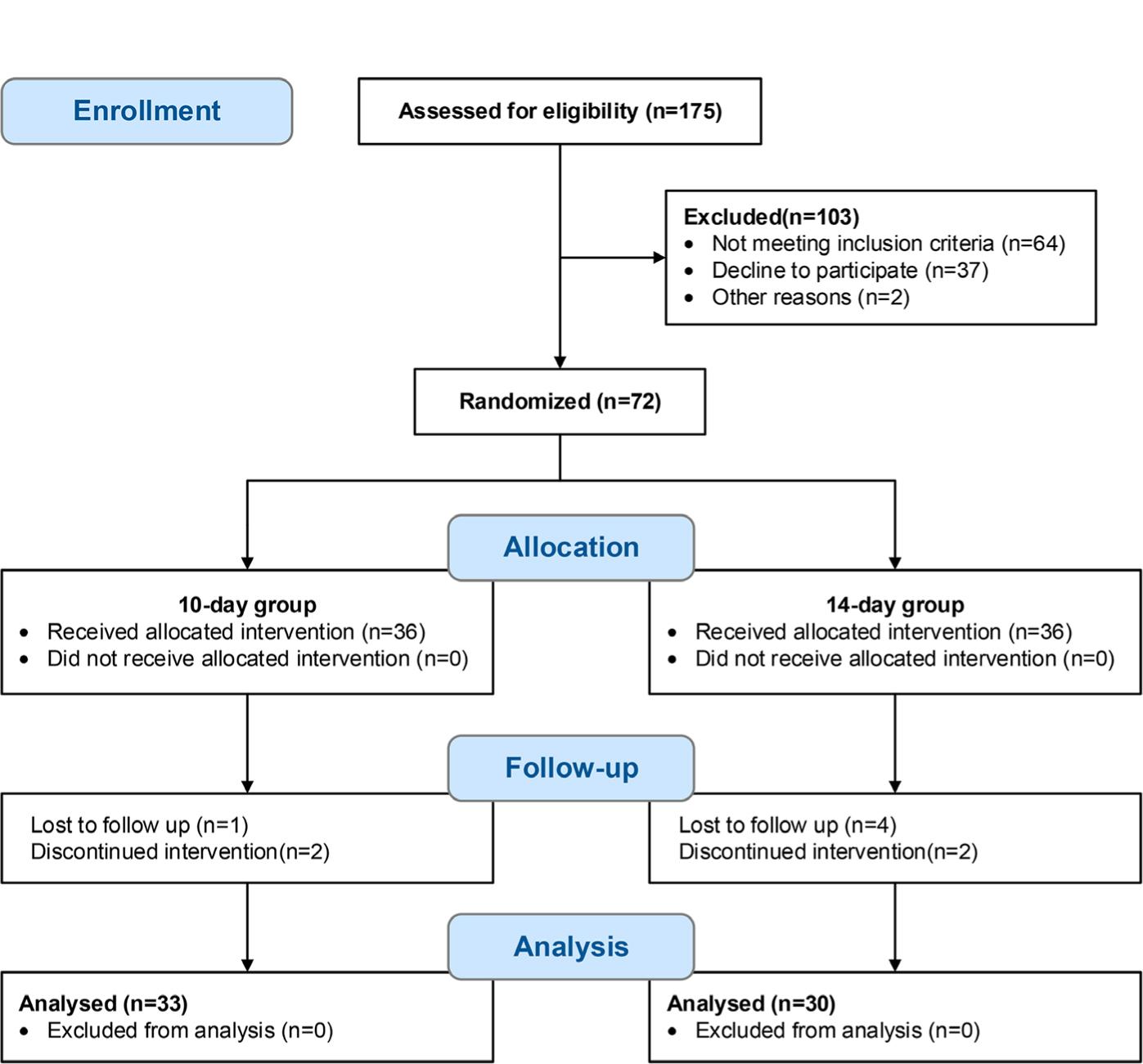
Figure 2.
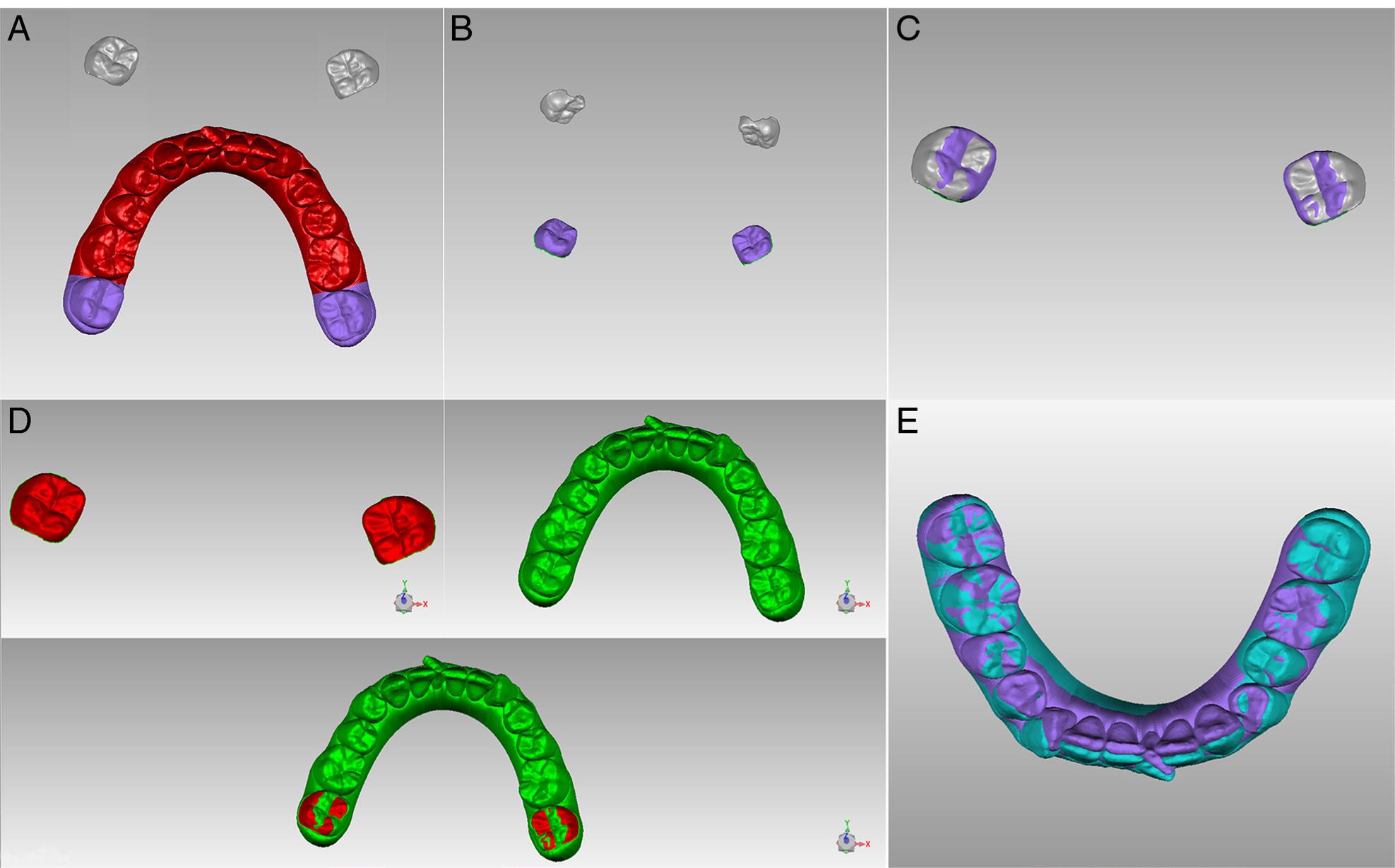
Figure 3.
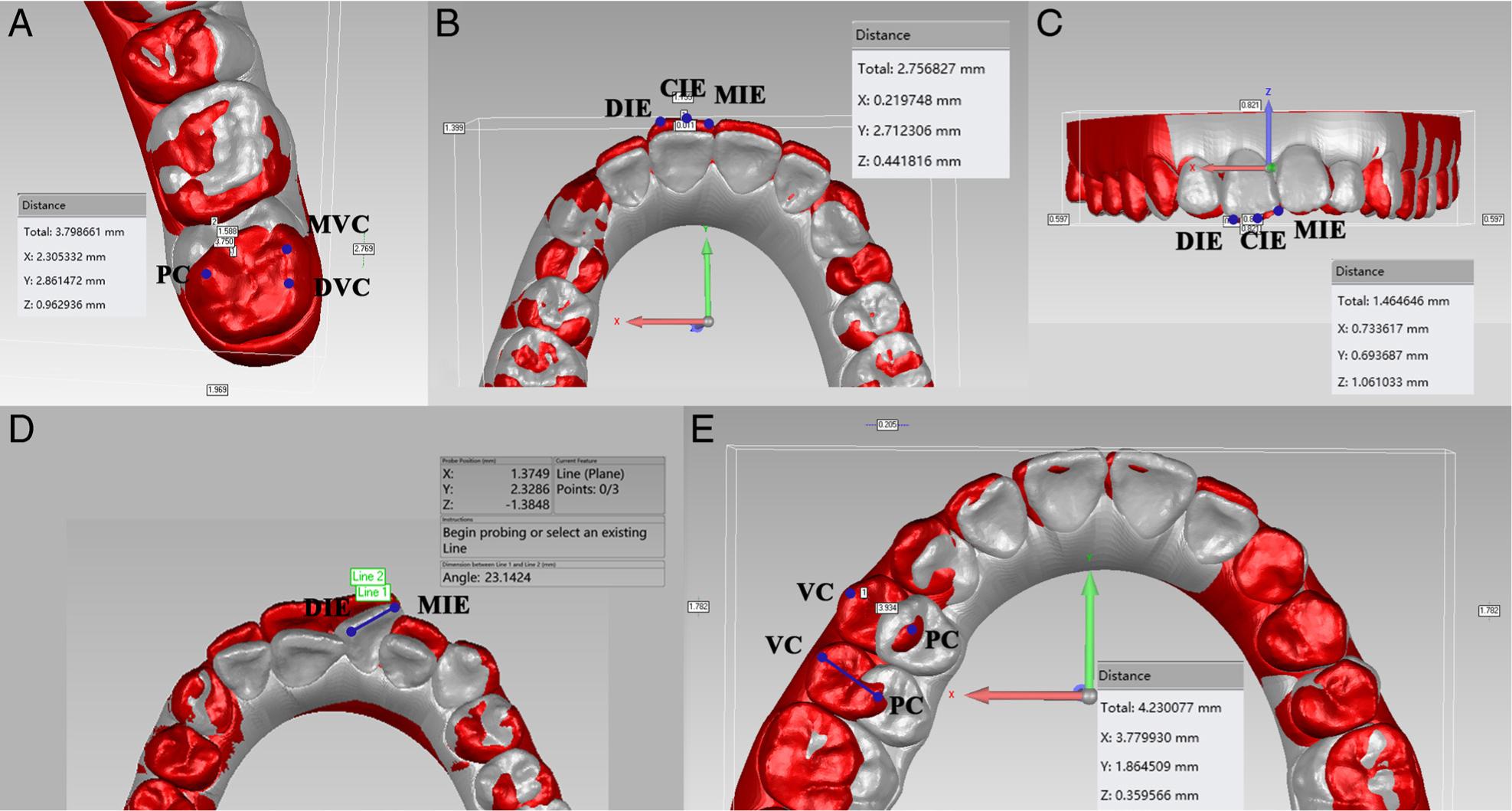
Figure 4.
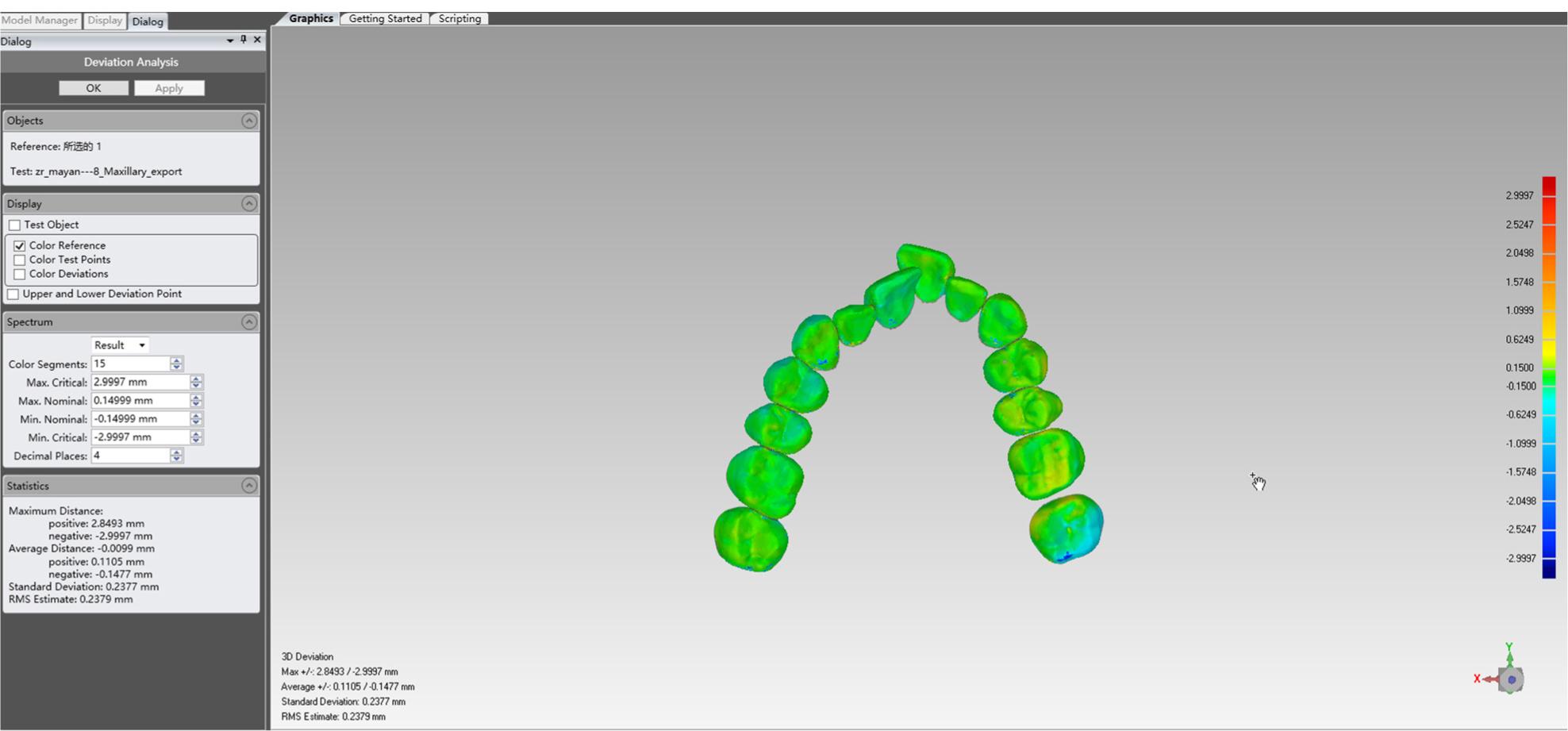
Figure 5.
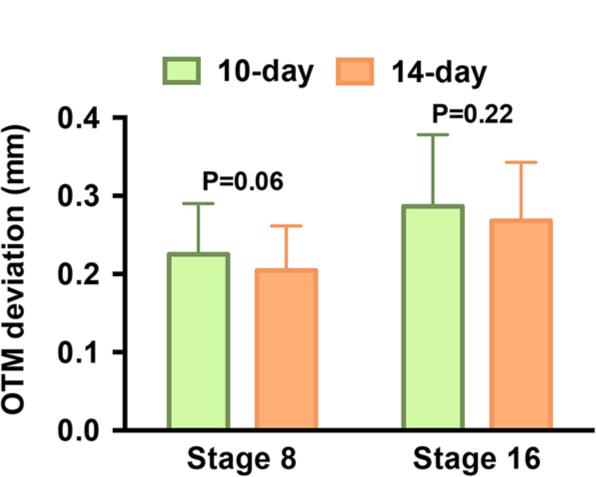
Figure 6.
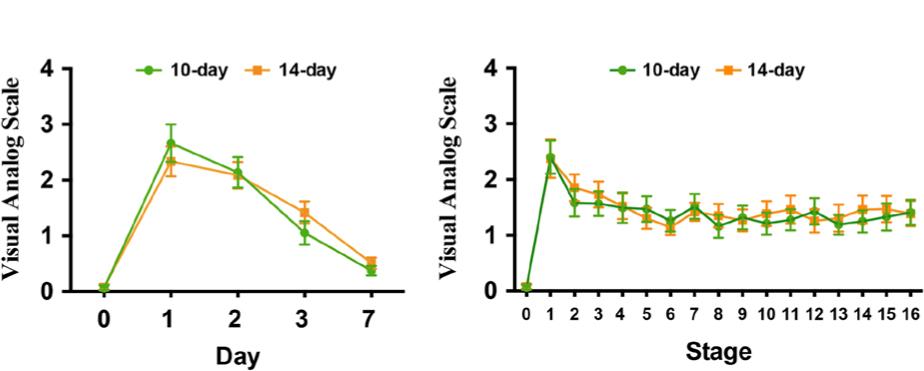
Comparison of orthodontic tooth movement (OTM) efficacy between 10-day and 14-day groups at stage 8 (T1) of the Invisalign treatment_
| 10-day group | 14-day group | ||||||||||
|---|---|---|---|---|---|---|---|---|---|---|---|
| OTM | N | Predicted | Actual OTM | Mean OTM | SD | N | Predicted | Actual OTM | Mean OTM | SD | P-value |
| Anterior intrusion | 76 | 1.78 mm | 1.34 mm | 75.15% | 13.20% | 81 | 1.72 mm | 1.26 mm | 73.42% | 13.92% | 0.43 |
| Anterior extrusion | 17 | 1.69 mm | 1.29 mm | 76.63% | 9.29% | 14 | 1.78 mm | 1.45 mm | 81.26% | 10.14% | 0.19 |
| Anterior proclination | 69 | 7.44° | 6.17° | 82.90% | 9.84% | 63 | 6.81° | 5.75° | 84.46% | 9.63% | 0.36 |
| Anterior retraction | 23 | 1.85 mm | 1.48 mm | 80.10% | 7.81% | 16 | 1.84 mm | 1.53 mm | 83.46% | 8.32% | 0.21 |
| Anterior derotation | 29 | 8.31° | 6.36° | 76.55% | 13.44% | 22 | 7.76° | 5.66° | 72.94% | 10.91% | 0.31 |
| Posterior expansion | 22 | 1.62 mm | 1.25 mm | 77.58% | 12.25% | 18 | 1.57 mm | 1.23 mm | 78.50% | 10.92% | 0.81 |
| Premolar derotation | 11 | 6.74° | 5.65° | 83.78% | 11.92% | 9 | 7.32° | 6.02° | 82.20% | 9.08% | 0.75 |
| Molar distal tipping | 27 | 1.62 mm | 1.3 mm | 80.49% | 9.59% | 23 | 1.64 mm | 1.27 mm | 77.73% | 12.93% | 0.39 |
| Posterior mesial tipping | 8 | 1.52 mm | 1.19 mm | 78.88% | 12.64% | 12 | 1.79 mm | 1.37 mm | 76.71% | 15.80% | 0.75 |
| Posterior intrusion | 17 | 1.18 mm | 0.95 mm | 80.87% | 7.26% | 22 | 1.14 mm | 0.93 mm | 81.34% | 7.48% | 0.85 |
Baseline characteristics of participants included in the fina analysis_
| 10-day group | 14-day group | |
|---|---|---|
| Gender (N, %) | ||
| Male | 8 (24.24%) | 6 (20.00%) |
| Female | 25 (75.76%) | 24 (80.00%) |
| Age (N, %) | ||
| ≤45 | 32 (96.97%) | 28 (93.33%) |
| >45 | 1 (3.03%) | 2 (6.67%) |
| Malocclusion (N, %) | ||
| Class I | 14 (42.42%) | 11 (36.67%) |
| Class II | 15 (45.45%) | 13 (43.33%) |
| Class III | 4 (12.12%) | 6 (20.00%) |
| Initial incisor irregularity | 6.38 ± 2.44 | 6.53 ± 2.08 |
| Visual analog scale (VAS) score | 0.06 ± 0.18 | 0.08 ± 0.26 |
Comparison of orthodontic tooth movement (OTM) efficacy between 10-day and 14-day groups at stage 16 (T2) of the Invisalign treatment_
| 10-day group | 14-day group | ||||||||||
|---|---|---|---|---|---|---|---|---|---|---|---|
| OTM | N | Predicted | Actual OTM | Mean OTM | SD | N | Predicted | Actual OTM | Mean OTM | SD | P-value |
| Anterior intrusion | 100 | 2.09 mm | 1.37 mm | 65.66% | 16.46% | 93 | 1.93 mm | 1.33 mm | 69.09% | 12.22% | 0.09 |
| Anterior extrusion | 29 | 2.13 mm | 1.41 | 66.15% | 11.00% | 26 | 2.06 mm | 1.45 mm | 70.25% | 9.91% | 0.15 |
| Anterior proclination | 72 | 11.95° | 9.01° | 75.40% | 12.02% | 66 | 11.42° | 8.93° | 78.23% | 12.87% | 0.18 |
| Anterior retraction | 51 | 2.14 mm | 1.7 mm | 79.58% | 11.75% | 43 | 2.12 mm | 1.63 mm | 76.92% | 11.66% | 0.28 |
| Anterior derotation | 41 | 9.52° | 6.74° | 70.80% | 14.36% | 35 | 9.14° | 6.37° | 69.73% | 10.65% | 0.75 |
| Posterior expansion | 29 | 1.84 mm | 1.39 mm | 75.63% | 11.74% | 38 | 1.97 mm | 1.52 mm | 77.00% | 14.87% | 0.66 |
| Premolar derotation | 16 | 7.57° | 5.65° | 74.66% | 17.20% | 19 | 8.54° | 6.53° | 76.46% | 14.85% | 0.75 |
| Molar distal tipping | 51 | 2.27 mm | 1.76 mm | 77.71% | 11.74% | 48 | 2.06 mm | 1.57 mm | 76.19% | 10.88% | 0.51 |
| Posterior mesial tipping | 12 | 1.83 mm | 1.21 mm | 65.72% | 12.57% | 17 | 1.91 mm | 1.35 mm | 70.92% | 14.17% | 0.32 |
| Posterior intrusion | 24 | 1.42 mm | 1.04 mm | 73.22% | 9.67% | 34 | 1.47 mm | 1.12 mm | 76.01% | 10.11% | 0.30 |